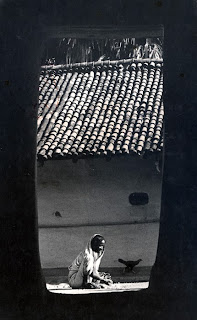ARE INDIAN VILLAGES ATTRACTIVE ENOUGH ?
Indian villages are beautiful. While a large number of people live in cities and live a metropolitan lifestyle, most of India's population live in villages - agriculture & farming being their major occupation. They spend a substantial part of the day in agricultural fields and return in the evening to their respective homes to spend time with family members. They have strong family bonding, social responsibilities and religious beliefs and are caring to each other.
Cast and religion dominate their lifestyles in most cases and the village "Panchayets" or welfare bodies look after their welfare, health and education and act as mediators during social disputes. Despite poverty, drinking water, sanitation and various other problems, absence or lack of electricity in many cases, most of India's rural mass recognize the value of education and send their children to schools - often at long distances from their houses.
In spite of extreme hardships and poverty, the villagers have a distinct cultural inclination and many of them practice art to decorate the walls of their huts and take part in various rural performing arts like dancing, singing and acting. Villages are India's lifeline and time has come when the rural mass can justifiably claim their stake to economically raise their standard of living after 66 years of India's independence.
Today's posting features some pictures of Bihar, Jharkhand and West Bengal villages, taken by me over the last two or three decades. The 1st picture ("Touch of mud") won me a UNESCO award (Okamoto prize) in 1988. Please post your comments by hitting the "no comments/comments" button below.
Happy viewing...
Indian villages are beautiful. While a large number of people live in cities and live a metropolitan lifestyle, most of India's population live in villages - agriculture & farming being their major occupation. They spend a substantial part of the day in agricultural fields and return in the evening to their respective homes to spend time with family members. They have strong family bonding, social responsibilities and religious beliefs and are caring to each other.
Cast and religion dominate their lifestyles in most cases and the village "Panchayets" or welfare bodies look after their welfare, health and education and act as mediators during social disputes. Despite poverty, drinking water, sanitation and various other problems, absence or lack of electricity in many cases, most of India's rural mass recognize the value of education and send their children to schools - often at long distances from their houses.
In spite of extreme hardships and poverty, the villagers have a distinct cultural inclination and many of them practice art to decorate the walls of their huts and take part in various rural performing arts like dancing, singing and acting. Villages are India's lifeline and time has come when the rural mass can justifiably claim their stake to economically raise their standard of living after 66 years of India's independence.
Today's posting features some pictures of Bihar, Jharkhand and West Bengal villages, taken by me over the last two or three decades. The 1st picture ("Touch of mud") won me a UNESCO award (Okamoto prize) in 1988. Please post your comments by hitting the "no comments/comments" button below.
Happy viewing...







khub-i sundor!!
ReplyDeleteThanks a ton, Kausik. :-)
Delete